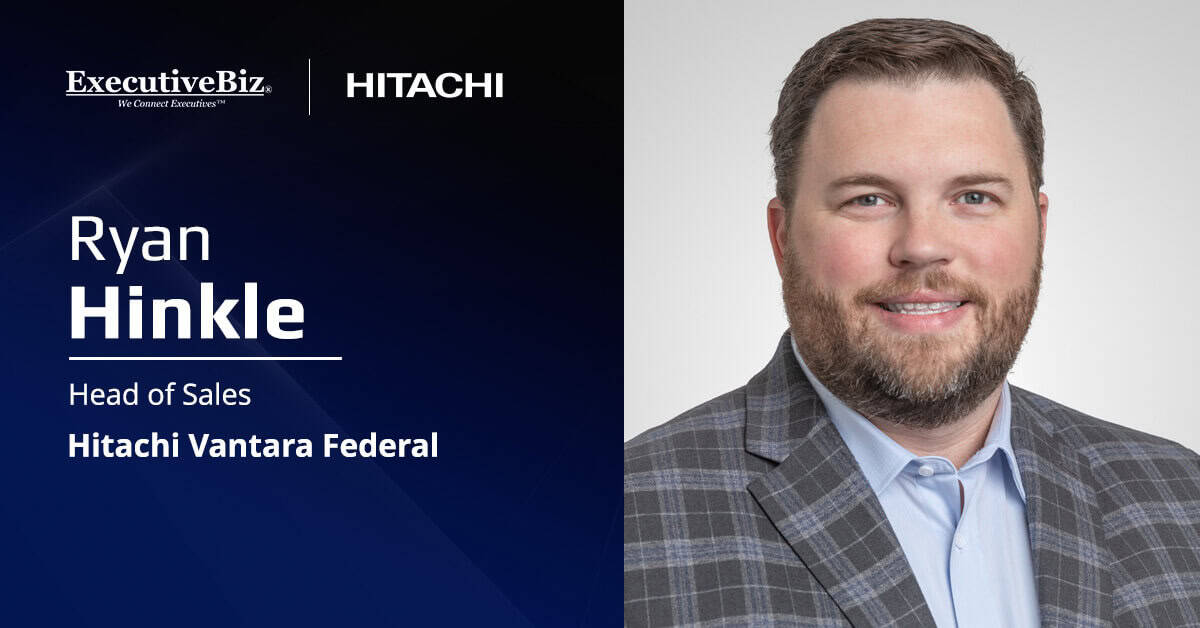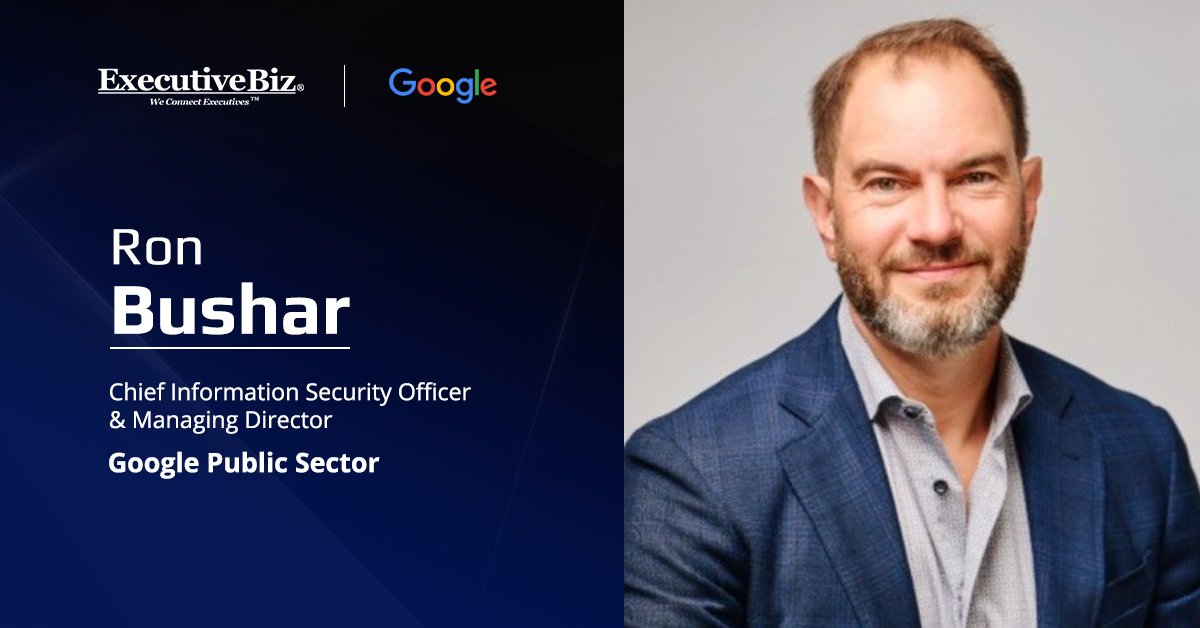Ryan Hinkle is leading Hitachi Vantara Federal into a more mission-driven and coordinated sales era. He’s taking the company’s innovative technology and combining it with excellence across sales, marketing, partnerships and capture, transforming the organization into one cohesive GovCon powerhouse.
Who Is Ryan Hinkle?
A GovCon veteran, Hinkle previously worked at TEKsystems and Dell EMC before moving to Hitachi in September 2020. Hinkle quickly realized early in his GovCon career that he enjoyed the complex, relationship-driven and mission-focused federal space, a combination that clicked for him.
What Does Ryan Hinkle Do at Hitachi Vantara Federal?
Hinkle, promoted to head of sales in April, is focusing on a major initiative at Hitachi. He’s expanding the company’s capabilities to the U.S. federal government through a “One Hitachi” approach where the firm is aligning go-to-market plans, building joint offerings and breaking down silos to show up as a single, unified partner.
Hinkle recently sat down with ExecutiveBiz for his first Spotlight interview, discussing federal demand growth in AI, setting priorities around limited capture funds and tools and technologies that can help organizations make their data more accessible and understandable.
Dive into the latest business opportunities in AI at the Potomac Officers Club’s 2026 Defense R&D Summit on Jan. 29! Hear directly from top-ranking federal officials at the “Powering AI at Mission Scale: Energy, Compute and Infrastructure for Defense Innovation” panel discussion. Secure your seat today for this essential GovCon event!
ExecutiveBiz: In which applications are you seeing the highest demand for AI and machine learning from your federal customers and what’s driving that demand?
Ryan Hinkle: We’re seeing the strongest demand for AI and machine learning in mission intelligence, cybersecurity and predictive analytics. These are areas where agencies are trying to utilize enormous volumes of structured and unstructured data to generate new insights or unlock new capabilities. Defense and intelligence customers are especially focused on accelerating decision-making at the edge, while civilian agencies are more likely to be using AI to automate repetitive processes and improve citizen engagement.
One main driver for AI investments is the growing realization that data has outpaced its supporting infrastructure. Agencies already have access to rich mission data. But the challenge is operationalizing that data in a secure, compliant and effective way. The new gold standard for AI programs is ensuring that data environments are AI-ready and can support the current and future use cases of end users across edge, core and cloud computing.
EBiz: What are some of the key barriers that remain in widespread federal cloud migration and how do you think we can overcome them?
Hinkle: Data gravity and compliance remain two of the biggest challenges. Many agencies have mission systems that can’t easily move to public cloud due to legacy dependencies or data sensitivity.
Additionally, cost predictability continues to surprise agencies once workloads are migrated. The early “cloud-first” mindset has evolved into a more thoughtful “cloud-smart” approach, which still serves as the ideal goal for agencies looking to navigate the complexity of hybrid cloud adoption for their applications and data.
The solution lies in hybrid architectures that bring cloud capabilities to the data, rather than forcing every workload into the cloud.
The need for ground breaking defense research and development has never been greater. Get the latest details on advances in R&D at the Potomac Officers Club’s 2026 Defense R&D Summit on Jan. 29! Get your burning questions about 5G answered by Thomas Rondeau, the Pentagon’s principal director for FutureG and 5G, following his keynote address. Spark collaborations with other GovCon titans and score that big contract. Sign up today!
EBiz: How do you set your priorities around limited capture dollars? What goes into the decision-making process of what contracts you want to go after?
Hinkle: We’re very intentional about where we invest our capture resources. We have three filters:
- Mission alignment. Is the opportunity in line with what we do best, which is modern data infrastructure, hybrid cloud and AI enablement?
- Our readiness to compete. Do we have the relationships, experience and partners needed to put forward a strong proposal?
- Strategic fit. Does this program strengthen our work with an agency that aligns with our mission and long-term direction?
Hitachi’s value in the federal space comes from our engineering depth and reputation as a trusted infrastructure partner. We focus on opportunities where that differentiation matters and where we can make the most impact.
EBiz: What do you think are the most pressing national security threats we’re facing today? How is your organization addressing these threats?
Hinkle: Data integrity and cyber resilience are at the top of the list. We’ve entered a phase where adversaries aren’t just trying to steal information—they’re trying to corrupt or undermine trust in it. The combination of AI-driven threats, deepfakes and data poisoning means agencies need to know their data is accurate, recoverable and authentic at all times.
That’s where we play a critical role. We work closely with defense and intelligence customers to design data architectures that can detect, isolate and recover from attacks without disrupting operations. Our focus is ensuring mission continuity, even under stress, through technologies that protect data at rest, in motion and across classified and unclassified domains.
EBiz: What kind of tools and technologies can organizations use to make their data more accessible and understandable?
Hinkle: The first step is visibility. Organizations must have an accurate understanding of what data exists, where it lives and who has access to it. Agencies can’t modernize what they can’t see. We’re helping them use data fabric and metadata management technologies to unify those silos under one data plane and one control plane, making data discoverable and trustworthy across environments.
Once that foundation is in place, layering on new digital capabilities like analytics, visualization and AI applications can quickly turn data into mission outcomes. The goal isn’t just accessibility, but trusted accessibility: giving the right people access to the right data at the right time, without compromising compliance or security. That’s where we see the real impact: when decision-makers can rely on their data with confidence.






